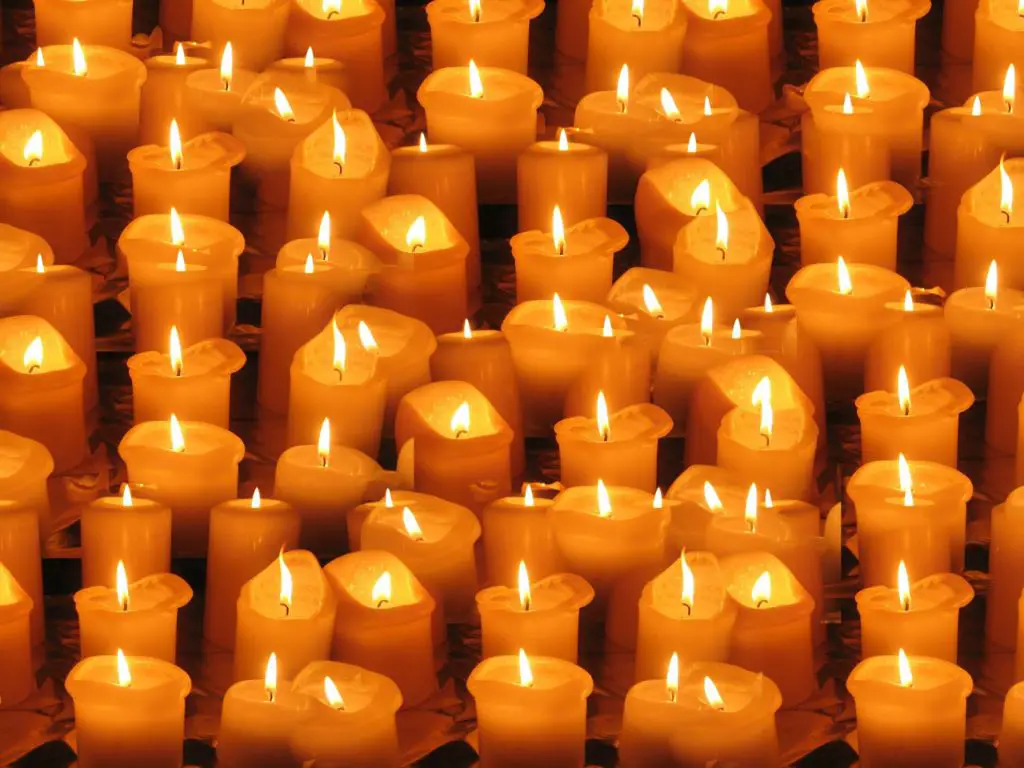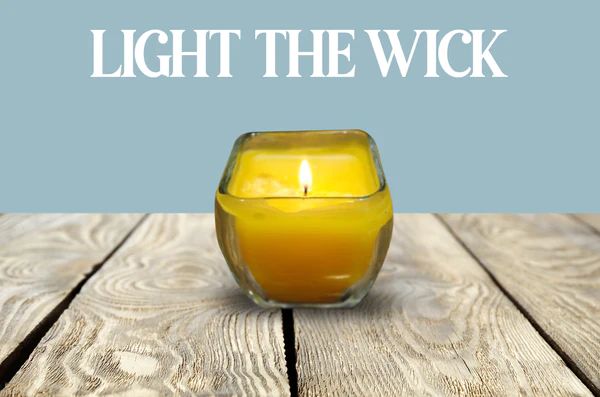Why Were Candles Important?
Candles are a solid fuel source consisting of wax and a flammable fibrous wick. They produce light through the combustion of the wick material, which melts the wax as it burns to provide fuel for the flame.[1] Candles have been used for centuries across many cultures, dating back to at least 3,000 BC in ancient Egypt and China. In earlier times, candles served as the primary portable light source, until they were gradually replaced by superior technology like kerosene lamps and eventually electric lights.
While the functionality of candles has changed over time, they continue to play an important role culturally and spiritually. The flickering flame provides soothing ambiance and a sense of tranquility in modern times. Candles also remain significant in religious ceremonies, celebrations, aromatherapy, and more.
[1] https://creativecandles.com/blogs/blog/a-history-of-candle-use
Providing Light

Before the invention of electricity in the late 19th century, candles were the only source of artificial light after sundown. For thousands of years, candles provided essential illumination within homes, workshops, stores and places of worship during the nighttime hours. According to sources, “Candles were used for lighting since ancient times” (https://www.ronxs.com/how-did-people-light-candles-before-electricity/). Without candles, it would have been difficult for pre-modern societies to engage in work, social activities or religious ceremonies after nightfall without relying solely on the moon and stars for light.
Candles allowed people to extend their waking hours well into the evening. The warm glow of candlelight facilitated evening reading, cooking, conversation and handicrafts. However, open flame candles carried a constant fire risk. They also produced smoke and required regular maintenance. The advent of clean, safe electric lighting was a revolutionary breakthrough, freeing society from dependence on candles for artificial illumination at night.
Religious Ceremonies
Candles have played an important role in religious ceremonies and rituals for millennia. The use of candles dates back to ancient civilizations like Egypt, Greece, and Rome, where they were used in temples and shrines to honor gods and goddesses. Today, candles continue to be an integral part of worship services, rituals, holidays, and festivals across many faiths including Christianity, Judaism, Buddhism, Hinduism, and Paganism (“The Role Of Candles In Religion”).
In Christianity, candles signify Jesus Christ as the light of the world. They are used during significant services like baptisms, confirmations, and for the Easter Vigil. During Advent, candles mark the weeks leading up to Christmas. In Catholic and Orthodox churches, votive candles can be lit to represent prayers. In Judaism, candles are lit on the Sabbath and Jewish holidays like Hanukkah. In Buddhism, candles represent enlightenment and are used in meditation. Hindus light candles for Diwali, the festival of lights. Pagans use candles of specific colors for rituals and spells (“Role of Candles in Religion”).
No matter the faith, candles create an atmosphere of warmth and sacredness. Their flickering flames provide a focal point for prayers, contemplation, and ceremonies.
Timekeeping
Candles played an important role in timekeeping before the invention of mechanical clocks. They were one of the most consistent and precise ways to measure the passage of time. Candles were used to mark the hours in candle clocks, which were an early predecessor to mechanical clocks. These candle clocks burned down at a constant rate, so the length of the candle indicated the time. Churches and monasteries used large candle clocks to keep track of prayer times. Smaller candle clocks allowed people to tell time in their homes. The hours were marked on the candle so people could monitor the burning of the candle over time. Candles enabled people to keep schedules before mechanical timekeeping methods were invented.
Heating and Cooking
Candles played an important role in providing heat for cooking and warmth before electricity and modern heating methods. In the past, candles were commonly used as a portable heat source for cooking simple foods or heating water. The candle flame could be used to heat cookware directly or be placed under a stove to provide heat. Candles were convenient for traveling and camping since they were small and portable. They allowed people to cook hot meals while on the road or away from home.
Candles were also utilized to provide supplemental heating and light in homes before central heating. placing candles throughout a room helped warm the air a bit. The small flames gave off a surprising amount of heat when used in quantity. Hearths and fireplaces were the main sources of heat, but candles helped take the chill out of living spaces. They allowed people to heat a room enough to make it livable even in cold weather. The portability of candles made them ideal for moving around to where heating was needed most.
Sources:
https://vacation-stay.com/listings/120351
Medical Use
Throughout history, candles have been used for medical purposes like cauterizing wounds. According to theflowerpot.co, before modern medical treatments were available, candles were a practical way to seal wounds and stop heavy bleeding. The heat from the flame could effectively cauterize cuts and other injuries. Cauterization involves burning the wound to seal broken blood vessels, which prevents further blood loss. Candles were likely sanitized before use by dipping them in boiling water or alcohol. While cauterization could prevent someone from bleeding to death, it carried risks of infection before antibiotics. Still, candle cauterization was an essential medical practice before more advanced methods of treating injuries and wounds were developed.
Art Medium
Candles have been an important art medium and decorative element in paintings, photography, and sculpture throughout history. The soft, warm glow of a candle often symbolized life, spirituality, or hope in ancient and medieval artworks. Candles and their flames were painted frequently in Dutch vanitas still life paintings to represent the ephemeral nature of life and meditation on mortality. Candles also created a moody lighting effect that artists wanted to capture in their paintings. Some famous examples of artwork featuring candles include Vermeer’s Girl with a Pearl Earring, Georges de La Tour’s Mary Magdalen with a Smoking Flame, and many of Paul Cézanne’s still lifes.
Artists through the ages have also used candles to decorate, sculpt, or craft art objects like candelabras, menorahs, and votives. The candle itself became a beautiful art medium. Wax and wicks can be shaped into stunning works of art as well as be used to embellish other materials. Candles remain a beloved decorative feature today, used to create ambiance and visual interest.
Communication
Candles have been used throughout history as a means of communication. Beeswax candles in particular were important for signaling purposes. Their bright, long-lasting flame made them ideal for transmitting messages over long distances.
During warfare, candles could be used to signal troop movements. Armies would coordinate attacks by lighting candles in sequence as a visual code. The candles were placed in towers or high vantage points and could convey prearranged messages rapidly across battlefields or to troops stationed far apart.
Candles were also used for lighthouse beacons to warn ships of danger or guide them safely to shore. The range and visibility of candlelit lighthouses helped mariners navigate treacherous coastlines and harbors.
In religious ceremonies, the lighting and extinguishing of candles often carried symbolic meaning. Candle flames marked the beginning or end of rituals and conveyed spiritual messages.
Today, though largely replaced by electric lights, candles are still used decoratively to signal special occasions like birthdays or holidays. Their warm glow continues to represent celebration, remembrance, and communication.
Celebrations
Candles have been a staple at celebrations for centuries. They are commonly used for birthdays, holidays, and special events as a way to brighten up the occasion. The tradition of putting candles on birthday cakes started in ancient Greece, where round cakes decorated with lit candles were taken to the temple of Artemis. This practice celebrated the lunar goddess Artemis and the glowing candles made the cakes shine like the moon. Over time, people began putting candles on birthday cakes to represent the celebration of one more year of life. Today, the candles on a birthday cake are meant to symbolize the hopes for the coming year.
Candles are also ubiquitous during holiday celebrations. Hanukkah, known as the Festival of Lights, incorporates the menorah candle holder as a key symbol of the holiday. The menorah holds nine candles, one for each of the eight nights of Hanukkah, plus the shamash helper candle. Hindu celebrations like Diwali also use candles and lanterns to signify the triumph of light over darkness and hope over despair. In Kwanzaa, the kinara candle holder represents the seven principles of African heritage. Candles are lit on each night to honor the values of unity, self-determination, collective work and responsibility, cooperative economics, purpose, creativity, and faith.
On Christmas, candles adorn window sills, mantles, and dinner tables to commemorate the star of Bethlehem that guided the three wise men. And candles are always present on birthday cakes for Jesus. The tradition of lighting candles on New Year’s Eve signifies letting go of the old year and bringing in the new one. Overall, the warm glow of candles adds a special ambiance to holidays and celebrations that people have enjoyed for centuries.
(“Why Do Catholics Use So Many Candles?”, https://www.goodcatholic.com/why-do-catholics-use-so-many-candles/)
Conclusion
In summary, candles have had an immensely important role throughout human history. Before the advent of electricity, candles were the primary source of artificial light which enabled many nighttime activities that would have otherwise been impossible. Candles allowed people to extend their days, providing illumination for reading, writing, working, socializing, and more. The candle’s flame was used for timekeeping, helped navigate through the darkness, provided warmth and was essential for religious ceremonies. Candlemaking itself became an important industry and art form. Though largely displaced by electric lighting today, candles remain vital for religious rituals, special occasions and emergencies. Their warm, flickering glow continues to hold an enduring appeal.






